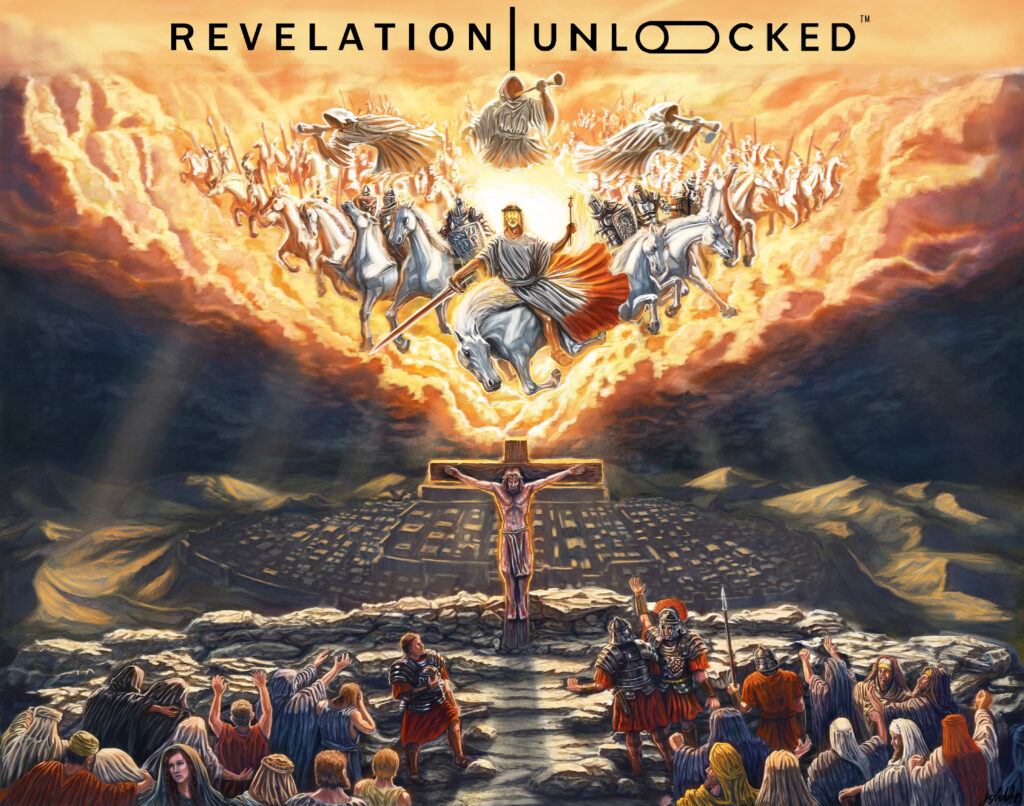
Elijah’s Story is Superimposed Over Revelation.
“And they gathered them together to the place which in Hebrew is called Har-Magedon.” – Rev 16:16. NASB
Armageddon is Revelations most famous word, even if it does only ever appear once in all the Bible. As we have noted already it represents the final clash of spiritual ideologies. Yet in secular media it has taken on a life of its own, with imaginative and spectacular interpretations. The deceptive demonic miracles of the last days will achieve worldwide success. In having spurned Bible teachings, people will believe a lie that will be accompanied by these deceptive miracles (2Thess.2:9-12). They will unite together in purpose, symbolized by their gathering to a “place”, which is in Hebrew called Armageddon, meaning “the mountain of Megiddo”. As we have previously noted Megiddo was not a mountain, but a fortress city located in the Valley of Jezreel (or the Plain of Esdraelon) at the foot of the Mount Carmel ridge.
We have also noted the allusion to the Elijah story in this end-time Mt Carmel showdown. This was the site of one of the greatest clashes in Israel’s history, between God’s true prophet (Elijah) and the false prophets of Baal (1 Kings 18). Before the plagues fall, however, Rev.13:13-14 portrays the earth beast bringing fire down from heaven to deceive the world into thinking that satan’s counterfeit Elijah message, (which will include false revivals led by a false spirit,) is the work of God. Revelation 13:13-14 represents satan’s counterfeit of Pentecost (bringing fire from heaven) and the 6th plague here discussed again alludes to the Elijah story and the Carmel showdown which had its application in the Pentecostal experience as well. That there will be a counterfeit Pentecost in the end times is evident.
Just prior to the Mt Carmel showdown, and just after the 3 ½ years of drought, Elijah made this charge against Ahab (whose wife was Jezebel,) “you have troubled Israel because you have forsaken the commandments of the Lord and followed the Ba’als” 1Kings 18:18.
We have also established that Armageddon is not a military battle among nations to be fought somewhere in the Middle East, but a global spiritual contest in which Christ decisively confronts the forces of darkness (2Cor.10:4). The outcome will be like that at Carmel but on a worldwide scale – with God’s triumph over the forces of darkness.
Take a moment with me to notice how the story of Elijah (1Kings 16 – 19) is superimposed over the book of Revelation. It begins when Ahab marries Jezebel as we studied in the church of Thyatira (Revelation 2:18-29). This covered the years 538AD to 1552 AD. Jezebel led God’s people into false worship and idolatry. This led to 3 ½ years of drought which in Daniel 7 and Revelation 12 -13 became 1260 years of papal rule. (Seven times that time period is mentioned in Daniel and Revelation.) After the drought, we have the Mt Carmel confrontation with truth and error as portrayed in Revelation 14. Jezebel makes a death decree in Revelation 13 and Elijah flees to the wilderness. Jezebel is destroyed (Revelation 17) and Elijah is taken to heaven. (2Kings 2). Revelation 14:6-12 is the end-time Elijah message that must go to all the world in the end of time. It is called the Three Angels Messages.
As far as I know there is only one church committed to its proclamation and propagation..
Armageddon is not a literal physical place; rather it stands for a place where a decisive showdown is held on the world’s stage between the forces of good and evil. In Revelations characteristic fashion, this actual confrontation is deferred until chapter 19.
A little confusion here is important to deal with. In Revelation 15:8 the sanctuary “closed” and no one could enter, indicating that the ministry of Christ had ended. However, Revelation 16:15 has a warning for those of us who follow Jesus to stay awake and be clothed (an allusion to the Laodicea message of Revelation 3). This warning would indicate that it is still within our powers to make good and bad decisions for Christ, evidence perhaps, that the close of probation is not intended in Revelation 15:8. This imagery reminds us of Matthew 24:43, 1 Thessalonians 5:2,4, and 2 Peter 3:10 which all use the concept of the “thief in the night” and unpreparedness – reference to Jesus coming, as a warning against complacency.
